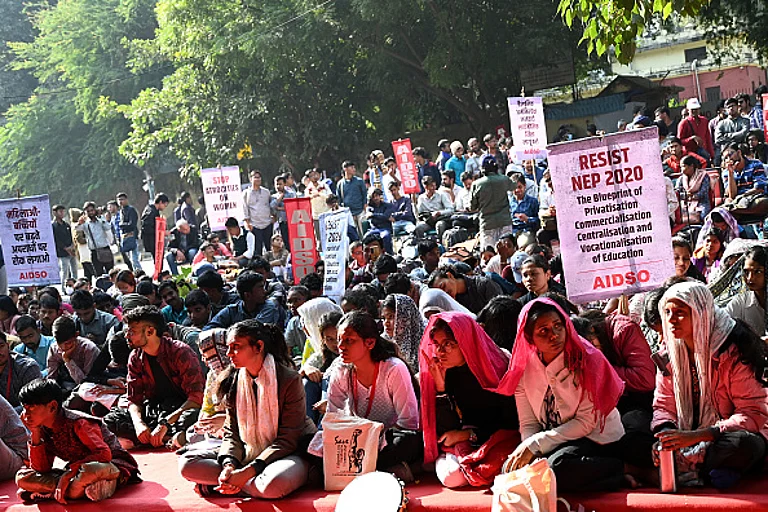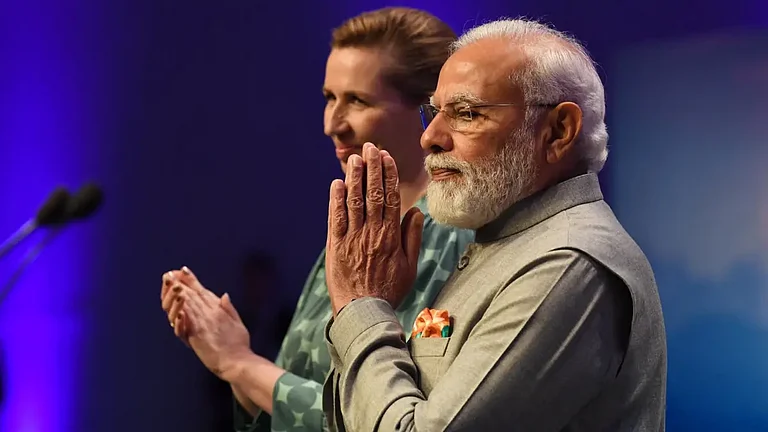the Bhoti language in the Eighth Schedule of the Constitution than now, in the year of the Dalai Lama’s ninetieth birthday celebrations and his sojourn in Ladakh, where the agitation demanding its inclusion has been underway since 1975.
The term Bhoti has its roots in the word “Bod”, meaning Tibet, implying that it is the language of Tibet. Since the language exists in several sovereign countries, Bhoti is the commonly accepted term rather than ‘Tibetan’.
Bhoti fulfils all the major preconditions identified by the Sitakant Mohapatra Committee constituted in 2003 for languages to be included in the 8th Schedule
Why Now Is The Right Time For India To Recognise Bhoti Language
Bhoti is deeply rooted in India's historical traditions, and its inclusion would mean the world to those who speak it.
There could not have been a more appropriate time to include the Bhoti language in the Eighth Schedule of the Constitution than now, in the year of the Dalai Lama’s ninetieth birthday celebrations and his sojourn in Ladakh, where the agitation demanding its inclusion has been underway since 1975. This language is spoken by almost ten lakh people living across the Himalayas, from Ladakh to Arunachal Pradesh, including parts of Jammu and Kashmir, Himachal Pradesh, Uttarakhand, Sikkim and West Bengal—not to mention Bhutan and Nepal.
This small step by the Union government would not only fulfil the long-cherished aspirations of the patriotic and peace-loving people of the region in one fell swoop, but also strengthen India’s position all along the Himalayas vis-a-vis the increasing belligerence of its northern neighbour.
The constitutional provisions relating to the Eighth Schedule are embedded in Articles 344(1) and 351 of the Constitution, which aims to recognise and promote the 22 Scheduled Indian languages for official use and literary development. The initial list of 14 major languages was expanded from time to time to include Sindhi, Konkani, Manipuri, Dogri, Bodo, Nepali, Maithali and Santhali. Apart from these, there are 38 other languages, including Bhoti, knocking at the doors of North Block seeking inclusion in the Eighth Schedule.
The term Bhoti has its roots in the word “Bod”, meaning Tibet, implying that it is the language of Tibet. Since the language exists in several sovereign countries, Bhoti is the commonly accepted term rather than ‘Tibetan’. There are several regional variations of Bhoti but the script, its origins and religious texts remain the same. It is interesting that the Bhoti script was created by an Indian scholar, Thonmi Sambhota, in the 7th century CE, based on the Brahmi script, a prototype of the Devnagari script. It is phonetic, like present-day Hindi, and not pictorial like Mandarin. India’s claim to both the Bhoti language and its script is, therefore, not manufactured but solidly rooted in history and a living reality for people on both sides of the border.
But India’s relationship with the Bhoti language goes even deeper. The Dalai Lama himself keeps reminding Indians as well as his countrymen about the Nalanda Tradition, based on which he acknowledges India as Tibet’s spiritual guru. Buddhism was introduced in Tibet in the 8th century CE by Santarakshita, a noted Indian scholar from the famed Nalanda University. He founded Tibet’s first monastery, the Samye Gompa. He was followed by the flamboyant Guru Padmasambhava and, over time, many more monasteries mushroomed throughout Tibet. A rigorous system of intellectual mastery of philosophy, logic and psychology was developed based on what they learnt from the Nalanda masters.
Our valuable Pali and Sanskrit texts in Nalanda, which we lost to the marauding forces of Bakhtiyar Khilji in 1202, were carried to safety to Tibet by the Nalanda masters, at the behest of Tibetan Kings, where they were preserved and translated into Bhoti. This became the basis of Tibetan Buddhism, which today attracts renewed world attention. It is, therefore, in our interest to reclaim this soft power of the Nalanda Tradition by embracing the Bhoti language with open arms.
Bhoti fulfils all the major preconditions identified by the Sitakant Mohapatra Committee constituted in 2003 for languages to be included in the 8th Schedule. Bhoti exceeds the minimum stipulated number of speakers of five lakh versus nine lakh as per the 2011 Census. It is recognised and taught in the schools in Ladakh, Himachal Pradesh, Sikkim and Arunachal Pradesh. It has its own original written literary tradition dating back to the 7th century, with a script of its own as mentioned above, and is spoken in geographically vast contiguous areas, which no other language can match.
Realising the importance of the Nalanda Tradition, the government of India has set up at least three institutions—the Central Institute of Higher Tibetan Studies, Varanasi, the Central Institute of Buddhist Studies, Leh and the Namgyal Institute of Tibetology, Gangtok—dedicated to Buddhist studies, with Bhoti as the principal language and script. In 2008, the Central Institute of Indian Languages at Mysore, known for its academic rigour, recommended Bhoti language for inclusion in the Eighth Schedule.
So, what stops India from going ahead and recognising Bothi as a Scheduled Language? First, it is domestic politics. The Himalayan population will never come close, in terms of numbers of speakers, to mainland Indian languages with similar demands. As aptly put by Max Weinrich, the renowned sociolinguist, “A language is a dialect with an army and a navy.” Therefore, the decision about what constitutes a language and what remains a dialect is purely political. If Nepali can become a Scheduled Language after Sikkim became a part of India, so can Bhoti be—and it covers a much larger geographical area.
The second reason is probably the over-cautious attitude of the country when it comes to China. The LAC and the presence of the Army are not the only factors that define boundaries. The strongest fences are human ones, of which language is a major component. That is why, China is creating settlements along the border and renaming places along it. India, on the other hand, seems hesitant to claim even what it can legitimately claim. Bhoti is as Indian for people living along the borders on the Indian side as Punjabi is for those living in Punjab. Why deny our border citizens this right? Consider that in 1992, even Nepal could have taken offence when Nepali was notified as a Scheduled Language.
Fact is, there can be no stronger cement for our borders than the emotional integration its people through due recognition to their language. Despite over-cautious bureaucrats and diplomats may say, the Prime Minister could take an independent strategic view of this matter, as the first Prime Minister had when he included Urdu as the 13th language when the Drafting Committee of the Constitution had failed to include it at all.


